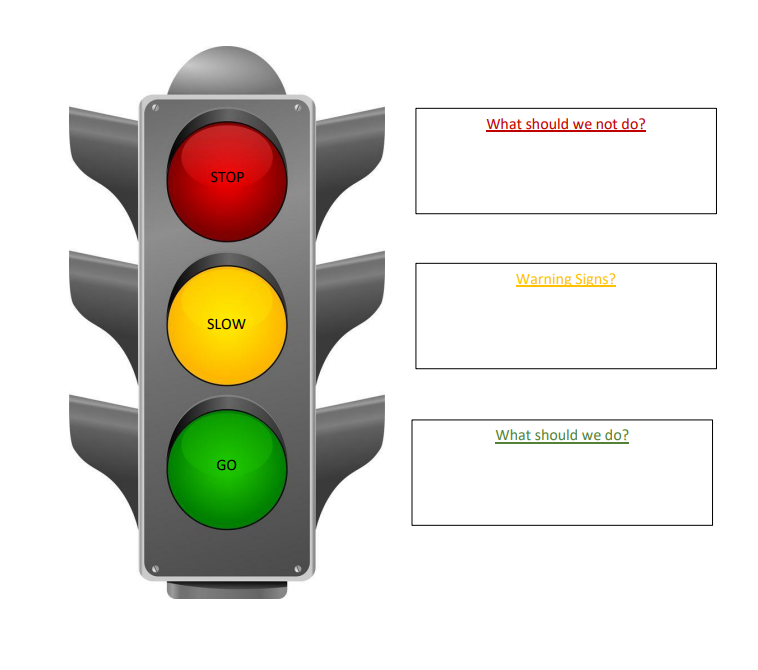From Megan K. Lerner and Anthony T. Vesco’s presentation on Strategies for Managing Stress and Trauma-Related Distress in Preschoolers, the Stoplight can be completed with individual children or as a group to teach self-regulation skills, as seen in the presentation here (start at 52:00):
This resource from centerforchildcounseling.org will help support children in down-regulating and returning to an emotional baseline from distress. Practicing when children are calm will help them develop the skills to self-regulate with support later.
When we introduce the practice of mindfulness meditation to children, we provide them with a valuable tool to slow down and become more aware of the world around them. This, in turn, teaches them an important strategy to self-regulate and manage their emotions effectively. With regular practice, mindfulness meditation can help children develop the ability to observe their thoughts and feelings without judgment, which can lead to reduced anxiety and increased emotional regulation. By cultivating mindfulness in children, we equip them with a skill that they can draw on throughout their lives to promote well-being and enhance their overall quality of life.
We begin by slowing down to pay attention with all of our senses to what is happening right now. Then we learn how to take in deep belly breaths in through our nose out through our mouth. We always try to hold the breath for 3 seconds and slowly release it. I always say blow like blowing out a candle. We do this 5 times.
Part of emotional regulation is noticing when we are overwhelmed with big feelings and finding a way to calm our bodies down. Practicing this type of concentration will help children when they need to focus on one task at a time with a clear mind. You can practice slowing down and concentrating on mindfulness we like to take our yoga mats outside.I made our yoga mats by cutting a roll of “grippy” drawer liner, so if you use it inside they won’t slip.
As a group, we answer these questions, one at a time:
What do you see?
What do you hear?
What do you feel?
What do you taste?
What do you smell?
Then together we say our affirmation:
I am here in this moment.
The pyramid model, also known as the “Teach, Model, and Reinforce” model, is a framework used to promote positive behavior in young children. It consists of three main components:
1. Teaching: This involves explicitly teaching children appropriate behavior and social skills. This may include providing clear expectations, teaching problem-solving strategies, and using positive reinforcement.
2. Modeling: Adults or peers model positive behavior for children to observe and imitate. This can include role-playing, demonstrating appropriate behavior, and providing praise and reinforcement for positive actions.
3. Reinforcing: This involves providing positive feedback and rewards for desired behavior. This can include verbal praise, stickers, or other tangible rewards.
Caregivers can create a supportive environment encouraging children to develop strong social skills and positive behavior patterns using this framework. The National Center for Pyramid Model Innovations (NCPMI) has abundant resources to guide and support your practice.
This worksheet/checklist provides practical ways to implement this model in your family childcare program.
One of the most important tasks for young children is developing self-regulation and the support of caregivers is critical in this process. This handout offers some information about what is involved in self-regulation, why it is important, and how responsive caregiving can support it.
Fostering Self Regulation Handout
Town Square Research to Practice Statements offer information from theory and research with examples and suggestions for what it means in your work with children. This series of position statements includes topics such as the benefits of a home-like environment, the power of open-ended materials, and the benefits of incorporating the arts.
Town Square Research to Practice Statement: Supporting the Development of Executive Function
In our recent webinar on child development, providers had lots of questions and advice on dealing with the development of the children in their care. So we brought together some resources from providers as well as expert in the field. Check out these resources for more information.
Establishing a United Approach with Parents







